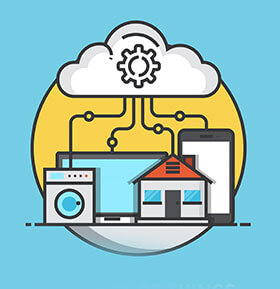We live in an age where AI can write blog posts, code apps, and repurpose your content faster than your morning espresso. But there’s still one skill that trumps all others for digital creators, coaches, consultants, and solopreneurs over 35 building their dream life with IMMachines:
The ability to teach yourself anything—quickly, deeply, and strategically.
In Peter Hollins’ The Self-Learning Blueprint, we find a practical roadmap for mastering any subject without classrooms, tutors, or endless YouTube rabbit holes. For solopreneurs, this isn’t just helpful—it’s non-negotiable. Because the truth is, building an online business requires learning dozens of new micro-skills. And no one is coming to save you with a neat syllabus.
You have to design your own curriculum.
Let’s break down the key takeaways from Hollins’ blueprint and apply them to your business as a digital creator—whether you’re launching a GPT-powered offer, creating a product funnel, or writing content that converts.
1. Ditch the Myth of “Not Ready”
“Most people never get started because they think they need more time, talent, or the perfect method. But self-learning thrives in action, not permission.”
This mindset tripwire shows up in creators all the time:
-
“I’m not a tech person.”
-
“I need to finish one more course before launching.”
-
“I’m not good at writing copy/design/marketing.”
Truth bomb? Those are just well-disguised excuses.
Hollins dismantles the myth that intelligence or talent is fixed. What matters most is mindset—specifically, a growth mindset. At IMMachines, we’ve seen creators over 50 completely reinvent themselves as AI content marketers… not because they were “naturals,” but because they refused to stay stuck.
If you’re waiting for motivation, credentials, or clarity before taking your next step—stop. Start where you are. Use what you have. Learn as you go.
That’s what solopreneurs do.
2. Master Macro & Micro Planning
Hollins introduces two learning levels:
-
Macro Planning: What’s the goal? Why does it matter? Where does it fit into your larger business mission?
-
Micro Planning: What do you need to learn today, this week, or this hour to move the needle?
At IMMachines, this is baked into how we build systems. You don’t just “learn AI.” You set a macro goal—like “Build a sales GPT that automates my digital product funnel”—and then create a micro plan: outline prompts, test outputs, build the page, record demo, launch.
Self-learners who skip this planning phase tend to spiral into overwhelm or distraction. Creators who pause to map their learning goals create momentum with surprising speed.
Here’s a simple prompt you can use right now:
“What do I need to learn this week to unlock a $500/month skill or asset in my business?”
Then reverse-engineer the learning process.
3. Use the Four Pillars of Self-Learning
Hollins lays out a simple yet powerful framework:
🔹 1. Transform & Synthesize
Don’t just consume information—process it. Reframe it. Teach it. Create from it.
Use the 50/50 rule: spend half your time learning and half doing something with what you just learned. For example:
-
Read 3 pages on crafting offers → then write 3 variations of your own.
-
Watch a tutorial on lead magnets → then build one using your AI tools.
-
Study a thread formula → write your own post using it.
“Information becomes transformation when you process it into action.”
🔹 2. Link the New to the Familiar
Anchor new ideas to things you already understand.
This is especially potent for our midlife solopreneur audience. If you’ve worked in education, you already understand systems. If you’ve led teams, you understand messaging. If you’ve raised kids, you understand behavior psychology.
Use analogy thinking. Don’t say, “I’m building a sales funnel.” Say, “I’m designing a customer journey, like onboarding someone to a gym—awareness, warm-up, trust, commitment.”
Suddenly, it’s not foreign—it’s familiar.
🔹 3. Test Yourself Constantly
Retrieval is the real teacher.
That means self-quizzing, explaining concepts out loud, or writing short posts to distill an idea. At IMMachines, we often say:
“Don’t just take notes. Create notes people would pay for.”
Turn what you learn into swipe files, lead magnets, or blog posts. That’s not just smart—it’s income-generating self-testing.
🔹 4. Give Yourself Absorption Space
Rest. Walk. Reflect. Sleep.
Your brain isn’t Google. It doesn’t do “instant recall on demand.” After a deep dive into a concept, let it breathe. Go to the gym. Go for a walk. Meditate.
Great ideas don’t usually happen while typing. They happen while living.
4. Use Strategic Note-Taking to Cement Mastery
Hollins introduces two powerful methods:
-
The Peter Method (4-layer note-taking system)
-
Structured Analysis (dual column: notes + insights)
If you’re building a personal knowledge bank for your digital products, use this structure to turn ideas into assets:
| Concept | Notes | Action |
|---|---|---|
| Offer Hooks | “10-word hook that stops the scroll” | Create 5 for my new GPT |
| CTA Framework | “Prompt: What’s the next best step?” | Use in my email funnel |
And when a GPT generates something you like? Don’t just copy-paste it—analyze it. Understand why it works. That’s how you compound learning and evolve from dabbler to pro.
5. Turn Self-Learning Into Income
This is where the IMMachines approach shines. You don’t need to wait years to profit from what you’ve learned. Instead, package your self-learning into something valuable for others:
-
Turn what you learned about headlines into a Swipe File or GPT.
-
Turn your personal transformation story into a Mini-Course or PDF.
-
Turn your AI workflows into a Template Bundle.
-
Turn your strategic notes into a Coaching Offer.
Every learning session is a potential product seed.
The difference between a struggling creator and a thriving solopreneur is not talent—it’s the decision to capture, structure, and sell what you’re learning.
6. Build Your IMMachines Learning Engine
Here’s how to apply Hollins’ blueprint using the IMMachines system:
Step 1: Identify a monetizable skill or concept (macro)
Ask: “What’s the next $500–$5,000/month income skill I want to acquire?”
Examples:
-
Creating GPT tools
-
Crafting lead magnets
-
Structuring digital products
-
Writing persuasive content
Step 2: Set a micro learning plan
-
Day 1–2: Read, watch, or use tools (input)
-
Day 3–4: Take action, synthesize, and test yourself (output)
-
Day 5–7: Publish a version, even if messy (launch)
Repeat weekly. Every learning sprint becomes an asset sprint.
Step 3: Stack & Systemize
Once you’ve learned something that works—systematize it. Turn your notes into a prompt. Build a GPT. Wrap it into a PDF. Film a walkthrough. Sell the system.
This is how you turn scattered insights into structured income.
Final Thoughts: Be the Product of Your Process
Solopreneurship is a full-contact sport. No one’s giving you a curriculum, a degree, or a gold star. But as Hollins teaches us:
“There are no real requirements to learning other than a willingness and a dash of self-discipline.”
Inside IMMachines, we believe the best creators aren’t the ones with credentials—they’re the ones with curiosity, courage, and a compounding habit of teaching themselves what the market rewards.
So here’s the truth:
If you want to create premium digital assets, GPT tools, or content that sells—don’t wait for permission. Pick your target, learn obsessively, test relentlessly, and turn the result into a product that others will thank you (and pay you) for.
You don’t need to be taught.
You need to learn how to learn—and then teach the world what you’ve discovered.






